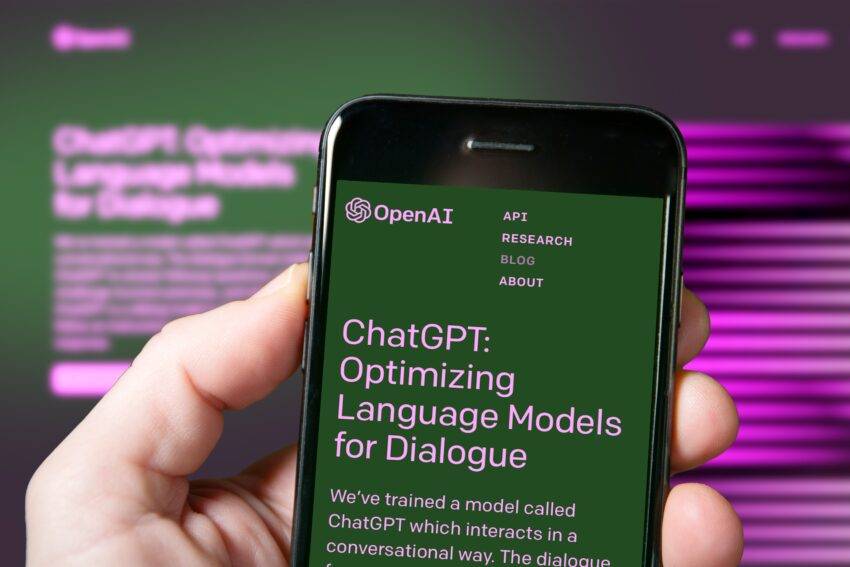AI chatbots are common in the marketing and customer service arena as an interface between the customer and customer service representative. They help to automate processes, reduce the workload on agents, and provide faster responses to customers.
According to Servion, AI will power 95% of all customer interactions including live calls and online chats. These technologies can recognize user intent, reply to chats, suggest help articles, escalate issues to agents, etc
And that brings the question – will AI chatbots eventually replace customer service agents altogether?
What is AI and how does it apply to chatbots?
Artificial intelligence is a field of study that deals with the training of machines to simulate human behavior. Some applications of AI include facial recognition, recommendation system, voice assistants, etc. Customer service is also becoming more efficient with tools like chatbots and virtual customer assistants.
An AI chatbot is a computer program that can imitate human interactions through a technology known as Natural Language Processing (NLP). It functions as a first-response tool that greets customers, listens to their concerns, and provides personalized responses. AI chatbots are smart tools that provide 24/7 support.
There are good examples of AI chatbots e.g. ChatGPT by OpenAI and Google Bard can form conversations and respond to various prompts or instructions. On the other hand, virtual customer assistants have been around for much longer. They include Amazon’s Alexa, Apple’s Siri, Microsoft’s Cortana, and Google Assistant.
How do AI chatbots support customer service centers?
The demand for excellent customer service continues to increase everyday. More companies are investing in automation and assistive tools to speed up operations. Below are some benefits of using AI chatbots to help your agents and provide responses to your customers.
- A chatbot can engage customers, suggest help center articles, collect customer information, route requests to a support agent
- It keeps track of previous conversations so agents can understand what the customer’s request is all about before responding.
- A chatbot helps to relieve stress by automating repetitive tasks and reducing the workload of your customer service team.
- You can set up an AI chatbot that replies to customers instantly. 90% of customers want an “immediate” response from service reps.
- An ai chatbot comes with features like intent recognition, a no-code bot builder, omni-channel deployment, integrations with third-party systems, and intelligent routing.
What are some of the disadvantages of chatbots?
Although chatbots are efficient tools that assist support teams and improve the customer service experience, you should know that there are some disadvantages. Here are a few reasons why chatbots may not work:
- A chatbot may not understand what your customer needs help with.
- It’s unable to read customer emotions or intent and it cannot empathize with the customer.
- A chatbot may be too robotic and have really poor language skills.
- It may be unable to solve complex queries and provide useful answers to the customers.
- The stats show that 54% of US consumers prefer to interact with agents than chatbots.
- Most chatbot platforms aren’t exactly built to be smart enough for customer service.
- Generic chatbots without AI technology are found to be annoying and unsatisfying.
What predictions are being made with regard to AI chatbots replacing human agents?
There have been predictions that AI technology will replace the majority of entry-level and low-skilled jobs. Some say that 25% of careers across industries will be non-existent by 2030. According to a Goldman Sachs report, 300 million full-time jobs could be affected by the increased use of AI-based systems like ChatGPT.
Customer service jobs are said to be highly threatened with so many emerging technologies. These chatbots can provide real-time support and are available 24/7. According to a 2022 study by Gartner, AI chatbots are expected to become the primary customer service channel for about a quarter of organizations by 2027.
However, it’s interesting to find that some people have contrary opinions to these predictions. Recent studies show that many employees are not prepared for the possibility of AI replacing them. When asked if they were concerned about technology, 80% of workers admit they don’t believe AI will replace their jobs.
The solution may be a combination of chatbots and human agents for a well-rounded customer experience.
AI chatbots cannot replace human customer service agents because they are meant to serve as tools. It’s not possible for a computer program to fully simulate how humans perceive, understand, and respond. Of course, AI made these chatbots almost as intelligent as humans but they still can’t replace human connection.
Customer service representatives cannot perform their jobs efficiently if they are stressed from having to do manual and repetitive tasks. They also have to reply to simple queries that are often asked by customers. You should realize that support agents are juggling a lot of tasks that need to be automated for greater efficiency.
Rather than try to replace humans with AI chatbots, we need to combine both to improve customer service. It’s a good idea for AI chatbots to provide first responses, answers to simple queries or FAQs, and then escalate to a human agent when necessary. This way, customer service teams can focus on their more important tasks.
